
Find Your Inner Calm: The Power of Stretching and Meditation for a Stress-Free Life
Meditation, popular in many Western countries [¹], especially the USA, offers various health benefits backed by growing research. Originating from ancient Vedic times in India and part of Ayurveda, meditation includes diverse techniques like contemplation, concentration, nature sounds, guided meditation, yoga, tai chi, qigong, breathing exercises, and mantras.
"Stretching" means applying force to muscles and tendons to make them longer. This helps improve how far you can move your joints, reduces stiffness or soreness, and prepares you for physical activity. There are different types of stretching, like active or passive, static or dynamic, and short-term or long-term. Each type has specific uses, such as increasing flexibility, warming up before exercise, or helping recovery by making movements pain-free and smooth.
The Good Effects of Meditation
- Reduces and removes built-up stress
- Boosts energy levels
- Improves overall health
- Lowers anxiety
- Decreases depression
- Lessens physical and mental pain
- Enhances memory
- Increases brain efficiency
Physical benefits:
- Lowers blood pressure
- Reduces heart rate
- Decreases lactate levels
- Lowers cortisol (stress hormone)
- Reduces epinephrine (adrenaline)
- Slows down metabolism
- Improves breathing patterns
- Uses less oxygen
- Produces less carbon dioxide
- Increases melatonin (sleep hormone)
- Raises dehydroepiandrosterone sulfate (DHEA-S) levels
- Increases skin resistance
- Improves blood flow to the brain
- Increases blood flow in specific brain areas
- Enhances brainwave coherence (EEG)
- Improves task performance speed
- Increases gray matter in the brain, which usually decreases with age
The Good Effects of Stretching on Physical Health
- Reduces Muscle Soreness [³]: Stretching can slightly decrease delayed onset muscle soreness within 72 hours after exercising.
- Injury Risk Reduction: Stretching may reduce the risk of injury by about 5%, although this effect is statistically insignificant.
- Enhanced Flexibility: Stretching improves joint range of motion (ROM), helping with flexibility.
- Pain-Free Motion: Stretching can help achieve pain-free [²], coordinated movement.
- Potential Long-Term Benefits: More prolonged stretching over many months or years might offer meaningful reductions in injury risk for recreational athletes.
Creating a Morning Routine for Inner Calm
By incorporating simple practices like meditation, stretching, and mindful breathing, you can set a positive tone for the rest of your day. This guide will help you create a morning routine that promotes inner calm, reduces stress, and enhances overall well-being.
Starting with a 10-Minute Meditation
1. Deep Breathing
- To remove negative thoughts through meditation, sit upright with legs crossed, aligning your head, shoulders, and hips.
- Bring your hands in a prayer position.
- Take a deep inhale through your nose, feeling your belly expand, and slowly exhale through your mouth, releasing tension.
- Visualize exhaling negative energy.
- Repeat deep breaths, focusing on the calming sensation.
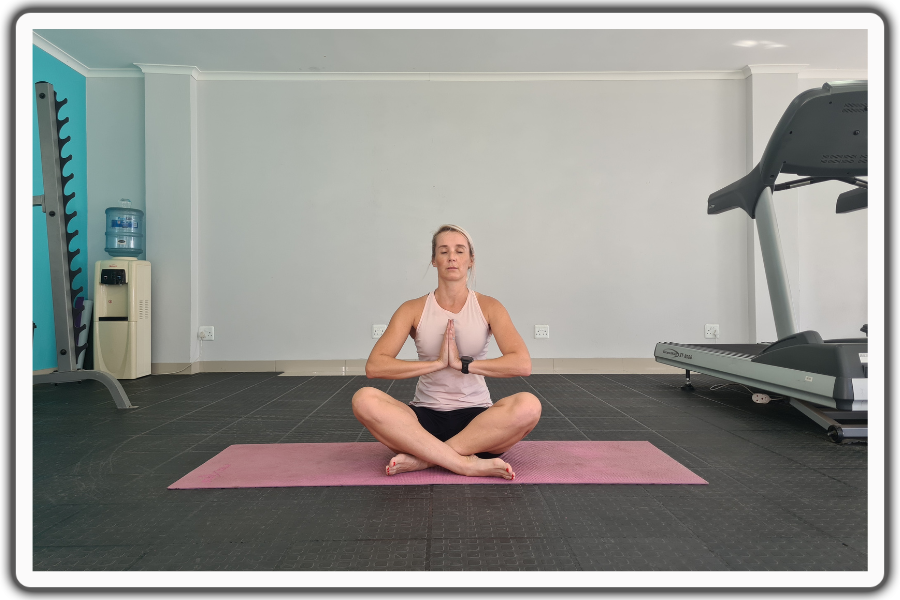
2. Welcoming Opportunity Meditation
- Begin in an upright sitting position in a quiet space with your legs crossed in front of your body, while maintaining good alignment with your head, shoulders, and hips.
- Bring your hands over your lap. Bring close attention to your breaths.
- As you inhale, feel the rise of your abdomen, allowing your belly to expand fully as the breath flows into it.
Sometimes, we feel we must take every opportunity out of fear of missing out. Instead, let's relax and breathe deeply, releasing that worry. Trust that better opportunities await you because you are worthy. With each breath, open your heart to the abundance of the universe, embrace mindfulness, and welcome the opportunities that align with your true path.
Let the universe guide you to what truly resonates with your soul. Let this feeling of openness and trust guide you as you gently return to the present moment, carrying this clarity, calmness, and positive impact into your day.
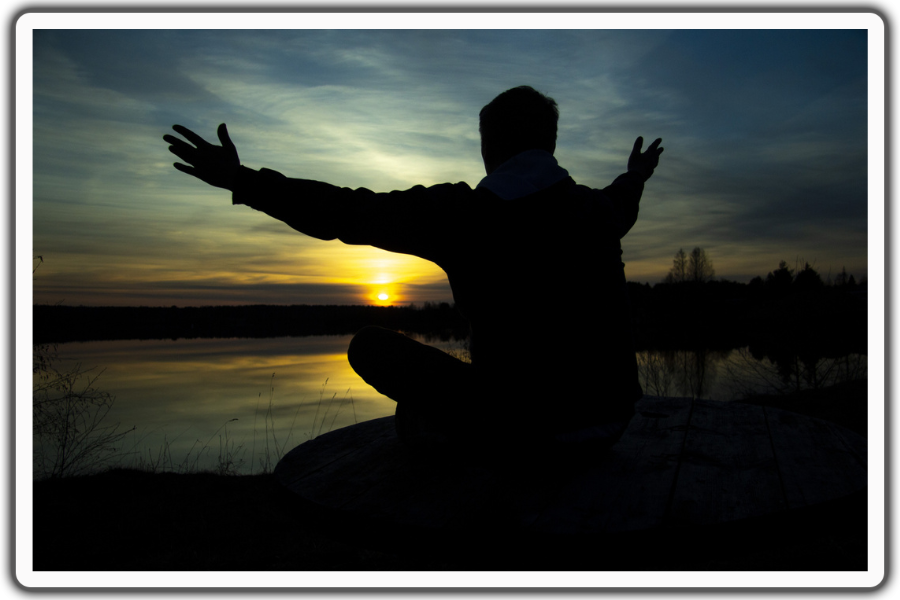
Incorporate Mindful Stretching Exercises into Your Daily Morning Routine
1. Neck Stretch
- Begin in an upright sitting position with your legs crossed in front of your body, maintaining good alignment with your head, shoulders, and hips.
- Place one hand on the floor for support as you rest your other hand on your knee.
- Engage your core. Looking for a light stretch along the side of your neck, drop one ear down towards your shoulder.
- Depending on your comfort level, progress the movement by bringing your ear closer to your shoulder.
- Hold this position for several deep belly breaths, in through your nose and out through your mouth.
- Relax and return to the starting position. Repeat the movement on the opposite side.
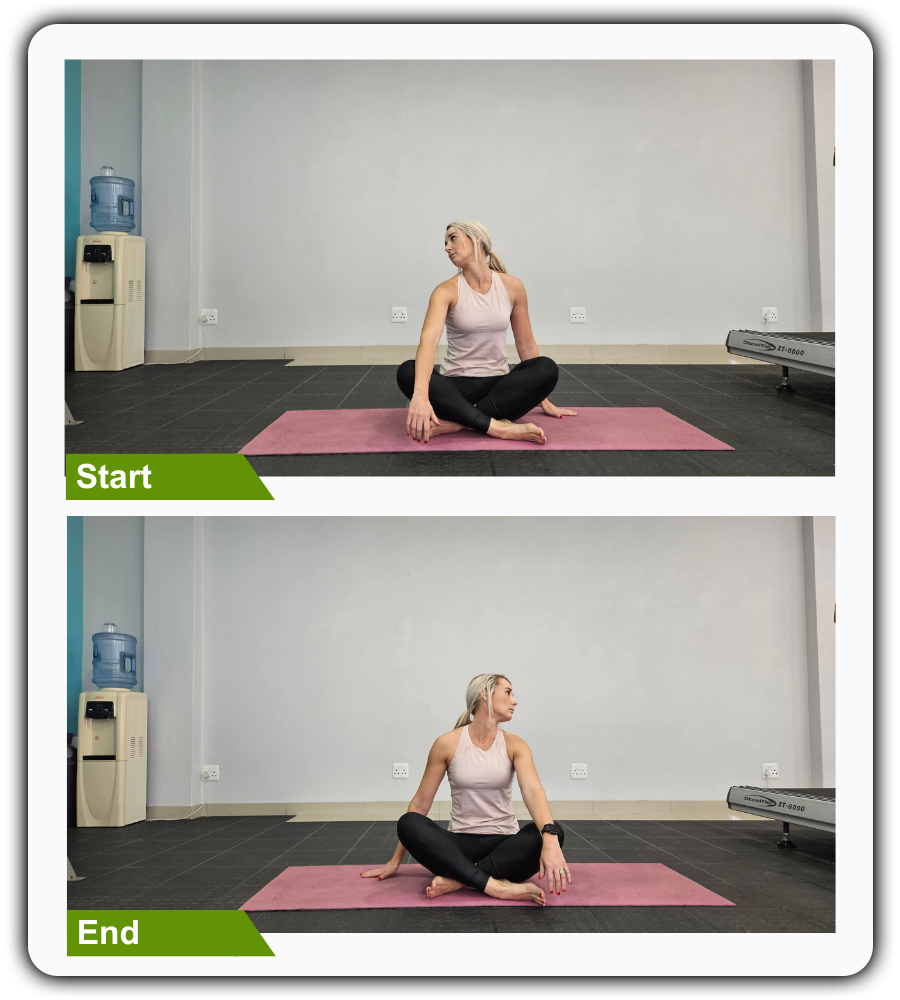
2. Shoulder Rolls
- Begin in an upright sitting position with your legs crossed in front of your body while maintaining good alignment with your head, shoulders, and hips.
- Engage your core and lift your shoulders, rolling them down and back until you feel resistance in your shoulder blades.
- Relax and repeat the movement in the opposite direction.
- Start with 10 repetitions in each direction.
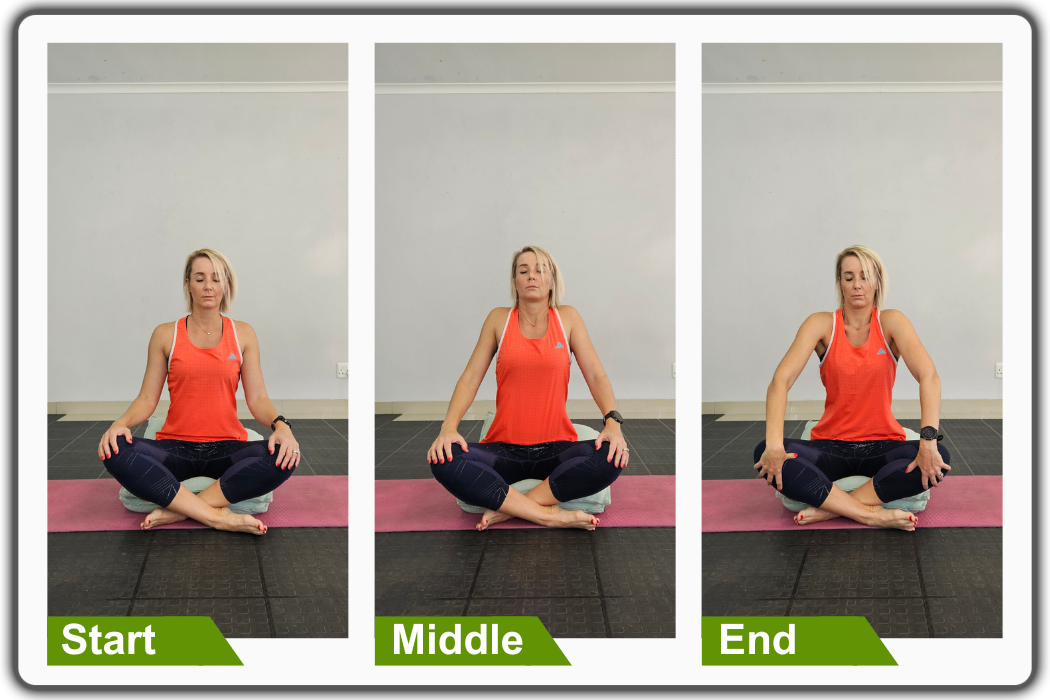
3. Seated Side Bend
- Begin in an upright sitting position, maintaining good alignment with your head, shoulders, and hips. Contract your core.
- Anchor one hand on your side for support and reach over your head with your other arm.
- Hold this position for several deep belly breaths, in through your nose and out through your mouth.
- Return to the starting position and repeat the movement on the opposite side.
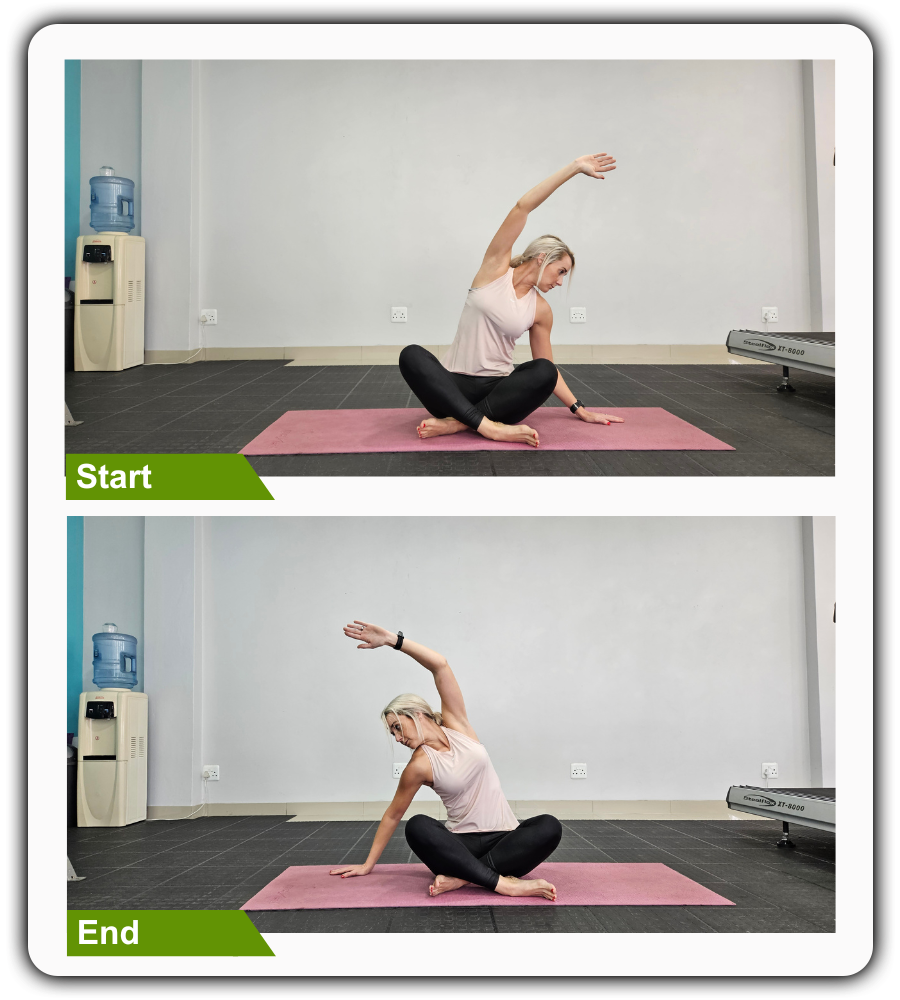
Finding Time to Stretch and Meditate
- Integrate Stretching into Daily Activities: Combine stretching with activities you already do, like stretching while watching TV or during work breaks.
- Create a New Habit: Build the habit of stretching by linking it to existing routines, such as stretching after brushing your teeth or before bed.
- Start Simple: Begin with a basic stretching routine that takes little time or effort, making it easier to stick with.
- Gradually Increase Duration and Intensity: Over time, slowly increase the length and difficulty of your stretching sessions to improve flexibility and strength.
- Prioritize Stretching: Make stretching an essential part of your schedule, ensuring it becomes a regular activity you look forward to.
- Consistency is Key: Try to stretch at least three times a week to keep flexible and reduce muscle tension.
- Combine with Meditation: Incorporate meditation into your stretching routine to enhance relaxation, mental clarity, and overall well-being.
Conclusion
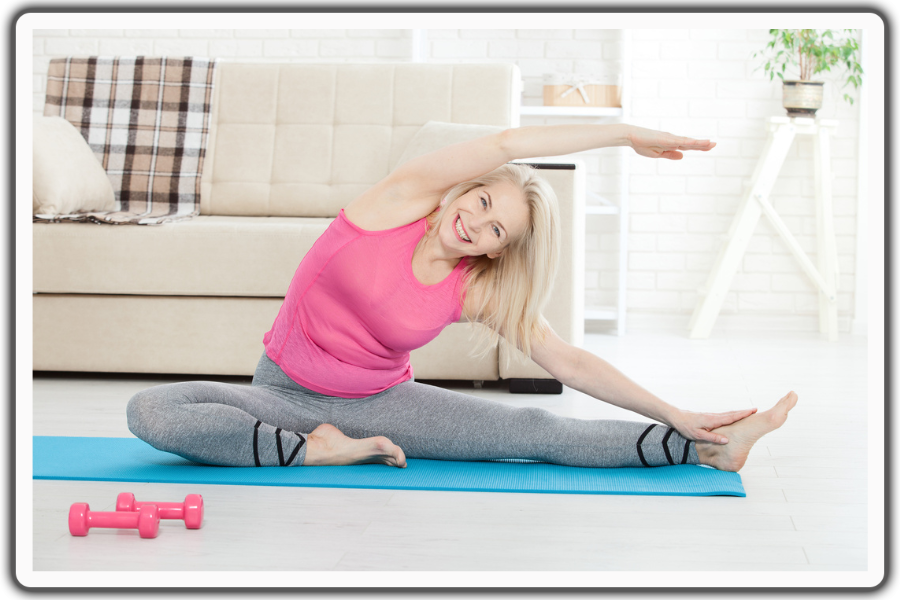
With consistent practice, stretching and meditation combination offers a powerful way to reduce stress, improve focus, and enhance physical and emotional well-being. Consistent deep meditation practice can make your meditation practice more effective and calming. Start your day with a 10-minute moving meditation to calm your mind and energize your body. Integrate stretching into your daily routine for long-term benefits and make it a habit.
References
- Sharma, Hari. Meditation: Process and effects. AYU (An International Quarterly Journal of Research in Ayurveda) 36(3):p 233-237, Jul–Sep 2015. | DOI: 10.4103/0974-8520.182756. https://journals.lww.com/AAYU/fulltext/2015/36030/Meditation__Process_and_effects.2.aspx
- Sands, William A. PhD, CSCS1; McNeal, Jeni R. PhD, CSCS*D2; Murray, Steven R. DA3; Ramsey, Michael W. PhD1; Sato, Kimitake PhD1; Mizuguchi, Satoshi PhD1; Stone, Michael H. PhD, FNSCA1. Stretching and Its Effects on Recovery: A Review. Strength and Conditioning Journal 35(5):p 30-36, October 2013. | DOI: 10.1519/SSC.0000000000000004 https://journals.lww.com/nsca-scj/fulltext/2013/10000/Stretching_and_Its_Effects_on_Recovery___A_Review.5.aspx.
- Herbert, R. D., & Gabriel, M. (2002). Effects of stretching before and after exercising on muscle soreness and risk of injury: Systematic review. BMJ, 325(7362), 468. https://doi.org/10.1136/bmj.325.7362.468
